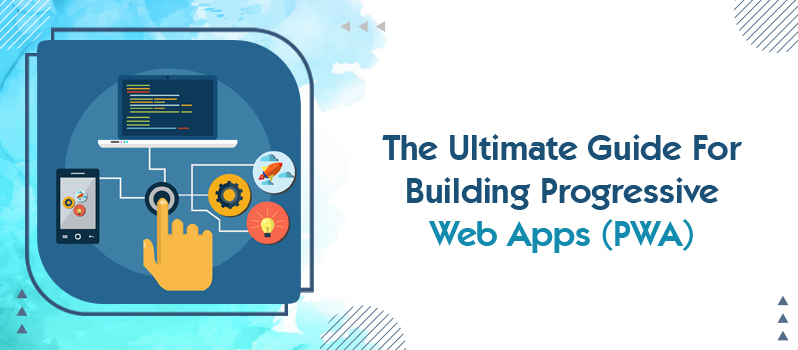The Progressive Web Apps (PWA) have been around for a while now, but they seem to be taking the web by storm. What are PWAs? They’re websites that seamlessly work like an app, right on your browser window. With this new technology, you’ll be able to offer your users the same experiences they would get on a native app without having to go through the hassle of building and managing one. The trend seems to be picking up steam, so what are you waiting for?
What is a Progressive Web App?
A progressive web app is a website that uses modern web capabilities to deliver an app-like user experience. They are fast, reliable, and engaging, making them ideal for users who are looking for a seamless experience between their mobile device and the web.
Progressive web apps are built using standard web technologies such as HTML, CSS, and JavaScript. However, they also take advantage of additional features available in modern browsers, such as service workers and push notifications. These features allow progressive web apps to provide a native app-like experience without requiring users to install an app from an app store.
In addition to providing a better user experience, progressive web apps can also improve business outcomes by increasing engagement and conversion rates. For example, Pinterest saw a 44% increase in their sign-up rate after they launched their progressive web app.
If you’re interested in building a progressive web app, check out our Ultimate Guide to Progressive Web Apps. It covers everything from what progressive web apps are and why you should build one, to how to get started and what tools you’ll need.
Benefits of a Progressive Web App
There are many benefits of using a Progressive Web App for your business. Here are just a few:
- Increased engagement with your users: PWAs offer an immersive and engaging experience that is similar to a native app, but without the need to download or install anything. This means that users are more likely to stay engaged with your PWA than they would be with a traditional website.
-
Increased conversion rates: Because PWAs offer a more engaging and user-friendly experience, they can lead to increased conversion rates for your business.
-
decreased bounce rates: If users find your PWA easy to use and navigate, they are less likely to leave before completing an action (such as making a purchase). This can lead to decreased bounce rates and improved overall website performance.
-
Improved SEO rankings: Google has announced that it gives preference to websites that are optimised for mobile devices and that offer a great user experience. As PWAs offer both of these things, they can help improve your SEO rankings.
-
Cost-effective: Building a PWA can be more cost-effective than developing a native app, as you only need to develop one version of the PWA that will work on all devices (including older ones).
Types of a Progressive Web App
There are three types of Progressive Web Apps: static, server-rendered, and client-rendered.
Static Progressive Web Apps are the simplest type of PWA. They are web pages that are rendered entirely on the client-side, using only HTML, CSS, and JavaScript. There is no need for a back-end server or database. Static PWAs are fast, reliable, and can be used offline.
Server-rendered Progressive Web Apps are more complex than static PWAs. They are web pages that are rendered on the server-side, using a back-end programming language like PHP, Ruby on Rails, or Node.js. Server-rendered PWAs can provide a richer user experience than static PWAs by dynamically rendering content based on user interactions.
Client-rendered Progressive Web Apps are the most complex type of PWA. They are web pages that are rendered on the client-side, using a front-end JavaScript framework like React or Angular. Client-rendered PWAs can provide a rich user experience by dynamically rendering content based on user interactions.
Creating A Progressive Web App
A progressive web app (PWA) is a type of web application that offers a set of features designed to improve the user experience.
Some of the features that can be found in a PWA include:
-Offline functionality – so users can still access the app even if they lose internet connection
-Push notifications – to keep users updated on new content or events
– homescreen icons – so users can easily access the app from their device’s home screen
-add to homescreen prompt – which appears when a user visits your site frequently and could benefit from having an icon on their home screen for quick access
To create a PWA, you’ll need to use a few different technologies, including HTML, CSS, and JavaScript. You’ll also need to make sure your web server is configured correctly to serve your PWA files.
Key Points For Successful PWA Building
- The first and foremost key point for successful PWA building is to make sure that your website is responsive. It should resize and adjust according to the different screen sizes of various devices.
-
Another key point is to focus on the user experience (UX) and make sure that it is optimized for all devices. This includes making sure that your website loads quickly, has a smooth scrolling experience, and so on.
-
Another important key point is to make use of caching techniques so that your website can load even when there is no internet connection. This is especially important for users who are on the go and may not always have access to a stable internet connection.
-
Finally, it is also important to keep your PWA up-to-date with the latest trends and technologies so that it can remain competitive in the market.
Conclusion
In conclusion, if you are looking to create a web app that is reliable, fast, and engaging for your users, then Progressive Web Apps are definitely worth considering. With the help of this guide, we hope you now have a better understanding of what PWAs are and how they can benefit your business. If you have any questions or would like to share your own experiences with PWAs, feel free to leave a comment below.

